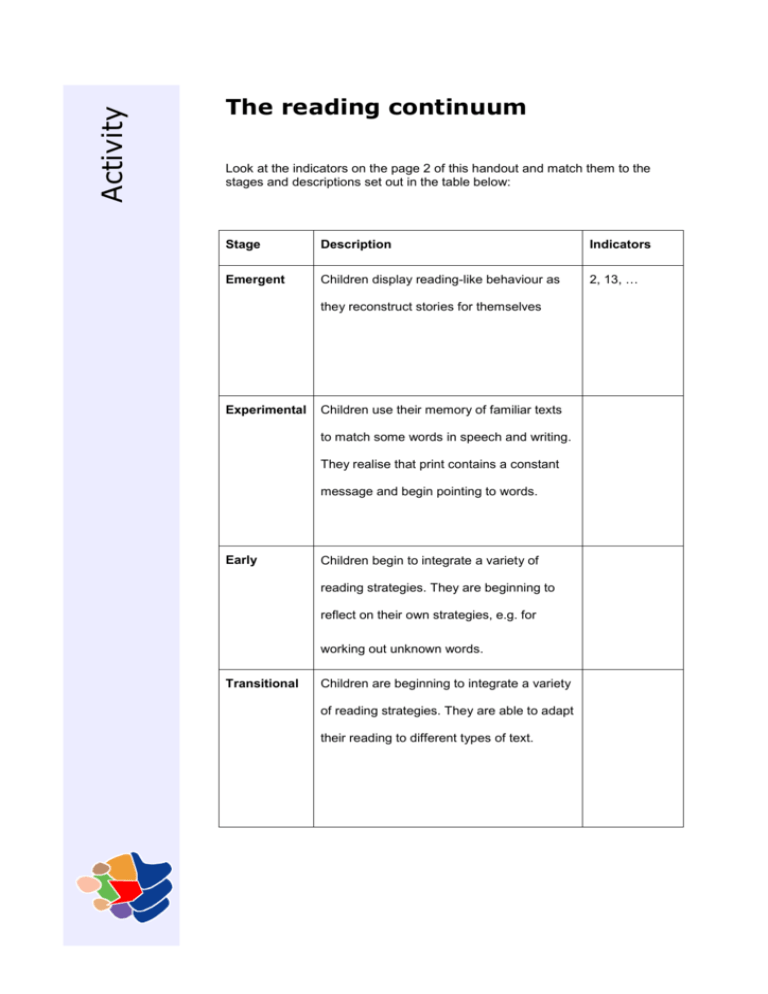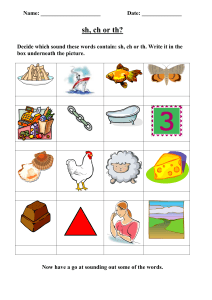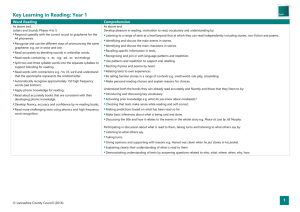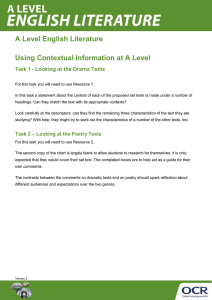Teaching Pronunciation (2hrs) – Trainer`s Notes
advertisement

Activity The reading continuum Look at the indicators on the page 2 of this handout and match them to the stages and descriptions set out in the table below: Stage Description Indicators Emergent Children display reading-like behaviour as 2, 13, … they reconstruct stories for themselves Experimental Children use their memory of familiar texts to match some words in speech and writing. They realise that print contains a constant message and begin pointing to words. Early Children begin to integrate a variety of reading strategies. They are beginning to reflect on their own strategies, e.g. for working out unknown words. Transitional Children are beginning to integrate a variety of reading strategies. They are able to adapt their reading to different types of text. 1. Is becoming efficient at: making predictions: self-correction, re-reading to clarify meaning, slowing down when reading difficult words, using knowledge of print conventions. 2. Makes links to own experience, e.g. points to illustrations saying ‘My Mummy goes to work, too’. 3. Relies heavily on sounding out for word identification. 4. Recognises a bank of words in a range of different contexts. 5. Selects appropriate material and adjusts reading strategies for different texts and purposes, e.g. scanning and skimming. 6. Realises that print contains a constant message, i.e. that the words of a written story remain the stay but the words of an oral story may change. 7. Is focused on expressing the meaning of a story rather than on reading words accurately. 8. Is beginning to read familiar texts confidently. 9. Can identify and talk about a range of different text forms such as letters, recipes, stories. 10. Realises that print carries a message but may read the writing differently each time. 11. Is able to match some spoken with written words. 12. Uses picture cues and knowledge of context to check understanding. 13. Displays reading-like behaviour: holding the book the right way up; turning the pages appropriately; looking at words and pictures; using pictures to construct ideas. 14. May read word-by-word or line by line when faced with an unfamiliar text. 15. Makes meaningful substitutions, e.g. ‘cool’ for ‘cold’. 16. Recognises own name, or part of it, in print. 17. Has an increasing bank of sight words. 18. Is becoming efficient at: sounding out to, using initial letters and knowledge of common letter patterns for decoding; using known parts of words, and word segmentation to make sense of the whole word. 19. Focuses more on meaning than reading words accurately. 2











